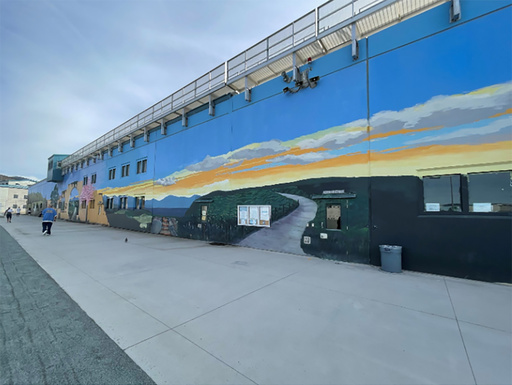COPENHAGEN — Almost three decades after the tragic killing of their parents, Erik and Lyle Menendez have embarked on a beautification initiative within the California prison where they are serving life sentences. This project takes inspiration from the Norwegian model of incarceration, which posits that humane conditions in a natural setting facilitate rehabilitation and successful reintegration into society, even for individuals convicted of serious crimes.
Norway, a long and narrow nation in northern Europe, stretches approximately 1,100 miles from north to south. The country has developed smaller prisons to allow inmates to serve their sentences closer to their communities. Kristian Mjåland, an associate professor of sociology at the University of Agder in Kristiansand, states that Norway’s incarceration rate is around one-tenth that of the United States, with only about 3,000 individuals incarcerated across the entire nation.
The recidivism rates in Norway are significantly low. Official government statistics reveal that only 16% of individuals released from prison were reconvicted within two years in 2020, with that number steadily declining year by year. In contrast, a survey conducted by the U.S. Department of Justice over a decade indicated that 66% of those released from state prisons in 24 states were rearrested within three years, and many ended up back in prison.
Mjåland explains that Norway’s prison system prioritizes treating individuals decently with well-trained staff and ensuring they have access to meaningful daily activities, termed the “principle of normality.” Prisoners in Norway also maintain their basic rights, including the right to vote and access public services like libraries, healthcare, and educational resources.
Moreover, Norway features open prisons, some situated on islands with opportunities for agricultural work and nature exposure. One of the most notable is Bastoey Island, known for its stunning location in the Oslo Fjord. Even notorious individuals like Anders Behring Breivik, responsible for the 2011 attacks that killed 77 people, live in conditions that provide amenities such as a dining room, fitness space, and a TV room equipped with an Xbox.
The concept of humane prison conditions is gaining traction in the U.S. as well. For example, the Pennsylvania Department of Corrections has recently begun to implement aspects of the Nordic approach, introducing a program called “Little Scandinavia” at a Chester prison in 2022.
The Menendez brothers’ case gained renewed attention when the Los Angeles County district attorney proposed that their life sentences without parole be reconsidered. Prosecutors seek a judge’s agreement to resentence them, making them eligible for parole. If approved, the parole board would still need to consent, with the final decision falling to the governor of California.
Their attorney and the district attorney argue that the brothers have served sufficient time, highlighting evidence of physical and sexual abuse inflicted by their father. They assert that Erik and Lyle, now in their 50s, have become model inmates committed to their rehabilitation.
Both brothers have made significant efforts to enhance the San Diego prison where they have been held for the past six years, following separate incarceration since 1996. In 2018, Lyle Menendez initiated a beautification program called Green Space at the Richard J. Donovan Correctional Facility, while Erik Menendez serves as the lead artist for a large mural showcasing San Diego landmarks.
Pedro Calderón Michel, deputy press secretary for the California Department of Corrections and Rehabilitation, conveyed that this project aims to create a more welcoming environment within the prison, mirroring the conditions outside its walls. The Menendez brothers continue to work on this ongoing initiative, which seeks to transform the prison yard from a stark concrete area into a vibrant park-like campus with a beautiful mural backdrop. Among the planned features are outdoor classrooms and training areas for service dogs, along with spaces for rehabilitation group meetings.
The state has recently introduced the “California Model” to replicate similar projects statewide, focusing on building safer communities through rehabilitation, education, and successful reentry for former inmates. Attorney Mark Geragos noted that he believes Lyle Menendez learned about the Norwegian model during his university studies. Currently, Lyle is enrolled in a master’s program covering urban planning and recidivism, with the hope that the beautification efforts will ease the reintegration process for those paroled.
Geragos expressed that environments featuring uninviting and gray spaces can be disorienting for inmates. Dominique Moran, a professor at the University of Birmingham in the U.K., notes that her research indicates that introducing green spaces within prisons enhances the well-being of both prisoners and correctional staff. Moran emphasizes that in Scandinavian countries, the intention is for individuals to serve their time as punishment rather than to experience additional punishment through their environment. According to her, the loss of liberty is punishment enough, without subjecting individuals to further hardship through their surroundings.



